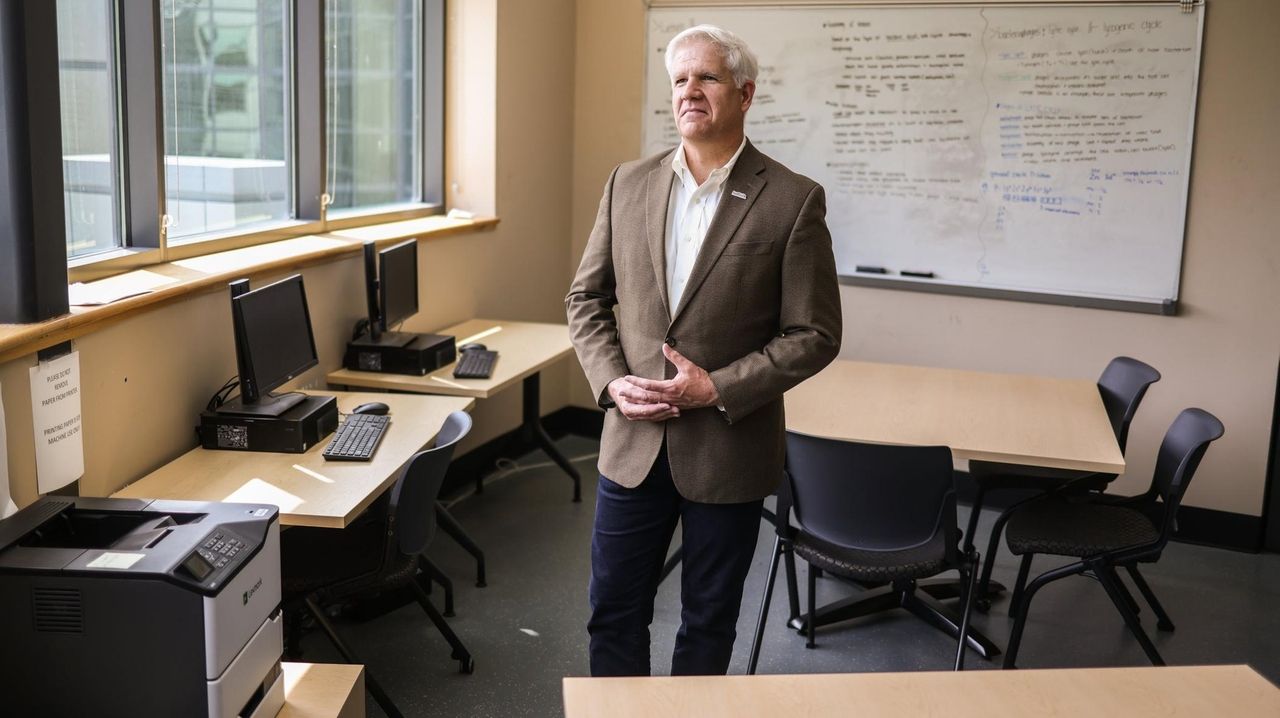Long Island college officials and policy analysts are raising concerns over proposed cuts to higher education in President Donald Trump’s “Big, Beautiful Bill,” which could impact Pell Grants, graduate student loans and other aid programs.
The House, which approved its version of the bill last month, is seeking to eliminate Pell Grant aid entirely for some students, and reduce the amount of assistance available to many others. Loans offered to graduate students and parents of students would be restricted or done away with.
The Senate, meanwhile, has proposed walking back many of the Pell Grant changes but would keep limits on loan programs and take away deferment options for student loan borrowers facing economic hardship or unemployment, according to the National Association of Student Financial Aid Administrators.
“The gamut of student aid programs, you name it, someone has come up with an idea in the past couple of months to either restrict access, cut the amount of aid students can get, or even in some cases eliminate the programs,” said Jill Desjean, the association’s director of policy analysis.
WHAT NEWSDAY FOUND
-
Long Island college officials and policy analysts are raising concerns over proposed cuts to higher education in President Donald Trump’s “Big, Beautiful Bill.”
-
The House, which adopted its version of the bill last month, is seeking to eliminate Pell Grant aid entirely for some students, and reduce the amount of assistance available to many others. Loans offered to graduate students and parents of students would be restricted or done away with.
-
The Senate has proposed walking back many of the Pell Grant changes but has expressed support for limits on student loans.
Some members of Congress have said the cuts would help address a projected $2.7 billion shortfall for the federal Pell Grant program in fiscal year 2025.
In Washington, lawmakers have been working feverishly to meet a July 4 deadline set by Trump to pass the budget.
The Senate released an updated version of its proposal late Friday night. The Associated Press reported that the White House issued a policy statement saying it “strongly supports passage” of the bill that “implements critical aspects” of the president’s agenda.
The urgency and likely lack of support from Democrats will leave both GOP-majority bodies with big decisions to make as the deadline approaches, Rebecca Natow, professor and director of the EdD Educational Leadership and Policy Program at Hofstra University, said in an interview with Newsday.
“We’ll have to see which chamber wins out this time,” she said. “First the Senate needs to come with an agreement on their bill, and then they need to go back to the House, and they have to come up with an identical bill between both chambers, so it remains to be seen.”
How could Pell Grants be affected?
The federal Pell Grant program is the “single largest source of federal grant aid” supporting students seeking post-secondary education. In 2023, the program provided $31 billion to about 6.5 million undergraduate students across the country, according to a congressional report.
Pell Grants are usually awarded to undergraduate students who display “exceptional financial need,” according to the federal Department of Education.
Nearly half of all first-year SUNY students are Pell Grant recipients, with the aid covering about 28% of their educational expenses, state officials said.
The House’s proposal would make any student enrolled less than half-time, defined as taking at least six credits per semester, ineligible for a Pell Grant. Students would have to take 30 credits per year, up from 24, to be considered full-time, which affects how much aid they can receive.
Lawmakers have also considered lowering the maximum Pell Grant award from $7,395 to $5,710 for the 2026-27 school year.
“The point of entry for a full-time award is harder to get to and the amount of the award is being decreased, so it’s kind of a double whammy,” said Edward Bonahue, president of Suffolk County Community College.
This past fall, 5,629 Suffolk students received about $16.2 million in Pell Grants. Changes to the definition of a full-time student could result in the loss of $2.59 million in financial aid, college officials said.
Bonahue said the House’s proposal to cut Pell Grants for students enrolled less than half time could impact hundreds at the college, at a cost of nearly $400,000 in aid.
“If that’s eliminated it’ll have a direct impact on needy students, who are going to school as their schedules and resources allow,” he said.
At Nassau Community College, 5,396 students received Pell Grants in the last school year, according to Patricia Noren, the college’s financial aid director.
Noren said changing the definition of a full-time student would have an impact at the college.
“For instance, a student currently considered full-time and receiving the maximum Pell Grant could see a decrease of around $1,600,” Noren wrote in an email. “While many of these students also receive additional financial support through the New York State Tuition Assistance Program, they may no longer receive the refunds they previously relied on to cover other educational expenses.”
Said Bonahue, “Community college should be affordable. Even if it’s a few thousand dollars, that could be a lot of money that working families do not have.”
Nassau Community College financial aid adviser Christopher Simon, right, helps Oscar Lopez apply for aid during a recent workshop. Credit: Newsday/Howard Schnapp
At a financial aid workshop at Nassau Community College last week, incoming full-time freshman Alexi Moreno said without assistance, he wouldn’t be able to attend college.
Financial aid helps “me a lot because I work, but I don’t have the money to improve my career,” Moreno, 26, of Westbury, said.
Moreno said he works in construction, but dreams of becoming a police officer and being able to “help people, help the government, help the town.”
What would happen to student loans?
While the House and Senate diverge on Pell Grant changes, experts said both support cuts that would impact federal student loans.
The Parent PLUS program, which provides loans to parents of college students, would be capped under the proposal put forth by the House. The Grad Plus program, which provides loans to students seeking graduate or professional degrees in areas such as law or medicine, would be eliminated.
Both proposals have garnered support in the Senate as well.
“We need people with graduate professional education to support our communities, to provide services like teaching, nursing, social work — all those good things,” said Desjean, of the student financial aid administrators’ association. “That’s definitely a place where we’ve seen consistent threats.”
Nick Prewett, an assistant provost and executive director of financial aid and scholarship services at Stony Brook University, said the proposals would limit graduate students’ ability to access aid to pursue their chosen degree path.
Medical and dental students at Stony Brook would be roughly $150,000 short of covering the cost of their degree if the caps were implemented, he said.
Prewett, who attended a national financial aid conference last week, said private and alternative lenders have said they could absorb some of the borrowing needed, but may be limited by applicants’ credit score and history.
“Those students that are pursuing a master’s or a doctoral degree may not be able to complete their programs with federal loans, and then they have to go to the private market, where the interest rates, repayment options and credit scores are going to vary,” he said.
Prewett said the proposals could also impact families that have good credit but little cash flow.
“I think there’s a lot of concern for the availability of funds for students, whether that be at the undergraduate or graduate level,” he said. “It will limit students’ access to higher education.”
Natow, of Hofstra, said the proposals might prevent some students, who otherwise would have attended college, from doing so.
“They will choose not to because it will become unaffordable for them,” she said.
Newsday’s Aidan Johnson and The Associated Press contributed to this story.







